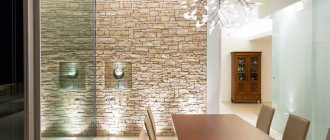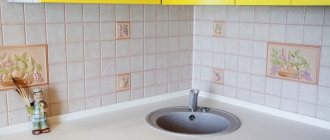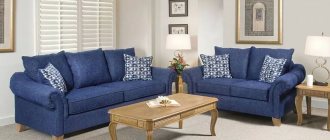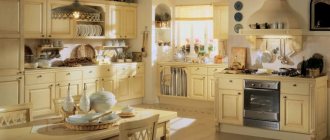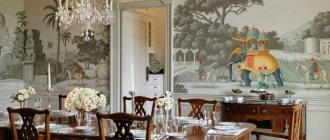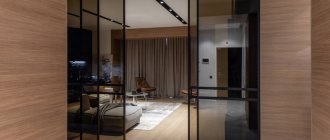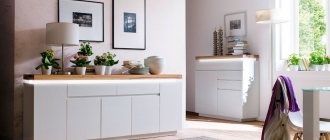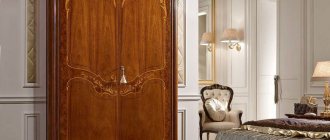The texture of natural materials fits organically into the design concept. Decorative stone in the interior is an effective, stylish decor. A wide range of textures and colors allows it to be used for rooms with different stylistic sounds. Imitation of natural stones will transform the interior and complement the solemn sound of classical and modern style.
Wide selection of stone for interior Source allcosmoshop.ru
Stone-like tiles for the fireplace Source www.oooarsenal.ru
Types of decorative stone and interior atmosphere
Modern technologies have made it possible to create analogues of natural stones at low cost. The materials are intended for use as decorative interior finishing. Types of decorative stone:
- Based on cement-concrete mixtures. Depending on the formulation, the composition contains the following components: cement, sand, reinforcing elements, various modifiers and plasticizers. The color palette is determined by coloring pigments. The textural variety depends on the geometry of the forms into which the solution is poured.
- An analogue of cement-concrete mixtures is gypsum. Production is organized according to a similar scheme. The gypsum base is suitable for creating a wide range of decor: brick, natural stone such as savage, sandstone.
- Artificial granite, marble (conglomerates - compounds). Up to 80% contain marble and granite chips obtained from crushed fractions of substandard residues of natural materials. The addition of binding resins, hardeners, and other reagents combines the mass into a durable monolith. In terms of technical characteristics, strength, resistance to mechanical and chemical influences, they are not inferior to natural analogues.
- Porcelain tiles. The mixture from which the tiles are made includes clay, silicates, and magnetic rocks (spars). Coloring pigments allow you to achieve the desired shade. High-temperature firing makes the material durable, resistant to mechanical stress and moisture. Porcelain tiles are an analogue of ceramic tiles with the addition of natural fillers.
- Composite - acrylic stone. Natural mineral fillers are bonded using acrylic resins. Dyes help achieve the desired shade.
Decorative slabs are smooth on the back side. A texture imitating natural material is applied to the outer surface. This shape makes installation easier.
Stone-like tiles for the fireplace Source www.oooarsenal.ru
Decorating the hall with decorative stone Source smak.ua
Which stone to choose for the wall in the kitchen?
Stone walls will show themselves not only in dry rooms, but also in the kitchen. The interior is exposed to moisture, changing temperatures and various types of dirt, so it requires high-quality wall cladding. Granite, that is, a volcanic rock, will ideally serve as a decorative stone for a kitchen wall.
Granite is the hardest stone, resistant to abrasion. It is also insensitive to chemicals, so it can be used on kitchen countertops. Remember that granite is a heavy material, so it requires a strong foundation. Due to its resistance to moisture and abrasion, the stone is ideal for the kitchen between wall-mounted and standing cabinets.
Granite comes in different colors so you can easily integrate it into your interior design idea. You will find tiles in warm and cool shades. You can combine stone on your kitchen wall with a worktop made of the same material to create a space that is resistant to stains, moisture and damage.
Stone wall in the kitchen - what material to choose?
- Granite is ideal for the kitchen,
- The stone is characterized by hardness, abrasion resistance and resistance to cleaning agents,
- The raw materials are also resistant to moisture,
- You can apply it both to the countertop and to the wall between hanging and standing cabinets - this way you will get a uniform surface,
- Granite is available in various shades, such as brown or aqua.
Kitchen wall cladding can provide an elegant backdrop for a table area.
Decorative stone in various stylistic directions
Natural materials, wood, stone, are organically integrated into a diverse style. Decorative artificial tiles make it possible to choose an imitation of natural materials at an affordable price. For example, natural polished marble is much more expensive than porcelain tiles.
Decorating balconies with decorative stone Source polinka-by.tam.by
Classicism
This category includes styles: baroque, antique, renaissance, neoclassicism and some others. All styles are united by the desire to recreate a richly decorated, solemn interior with a touch of pathos. Marble, polished granite, aventurine with mica inclusions are decorative companions for such interiors. The stone is mainly used to decorate fireplaces, columns, and wall panels. The main thing is to maintain balanced proportions between all the design elements of the room. Use the slab as a floor covering. Decorative marble-effect tiles are used in bathrooms.
Floor tiles in the living room interior Source 3dplitka.ru
Classic interior Source www.etsy.com
See also: Catalog of companies that specialize in finishing materials.
Advantages and disadvantages of finishing stone walls inside an apartment
Finishing with decorative stone in an apartment has its pros and cons. The positive aspects include:
- resistance to mechanical stress;
- combination of price and quality;
- the ability to complete the work independently in a short period of time;
- the absence of harmful additives and reagents in the composition of artificial stone and the environmental safety of natural stones;
- resistance to humidity and water ingress.
Among the shortcomings the following points stand out:
- the material is more expensive than conventional wallpaper;
- heavy weight and complex installation of a natural product;
- the need for treatment with disinfectants;
- Some varieties are poorly susceptible to restoration.
Regulatory styles
First of all, these include styles designed in the traditions of minimalism. Laconism, the use of strict geometric shapes, the absence of excessive decoration, simplicity of lines are the aesthetic principles of stylistics. Decorative stone in a minimalist interior looks more expressive. The absence of unnecessary details creates additional space for visual emphasis on the texture of the material.
Glossy stone tiles in the living room interior Source rumble.com
The slabs are used to highlight zones, as a fireplace finish. Individual structural elements, open plasterboard shelves, and partitions are emphasized.
Sandstone textures are mainly used; yellowish shades soften the “severity” of minimalism. The grayish-white tones of slate and shungite look good in the interior and harmonize with the overall style.
Smooth lappatted (non-slip) porcelain stoneware is suitable as a floor covering.
Room with a fireplace in a loft style Source pt.aviarydecor.com
The urban style of techno and hi-tech limits the use of decor; mainly modern composite materials are used. But inclusions of stone decor with textures of brick and savage stone naturally fit into techno and hi-tech styles.
Loft - eclectic (mixed) style. Originated in the first half of the 19th century. The bohemian intelligentsia of America reclaimed the premises of former factories, warehouses and attics as living quarters. Spacious rooms with brickwork, rubble and cobblestone textures are part of the natural ambiance of the loft, so stone decor is organic in this style.
Loft style home interior Source mydesign-review.blogspot.com
Living room with a decorative wall Source megastroyclub.ru
Homemade or organic styles
This stylistic direction is united by the desire to create an atmosphere of comfort. The functional content of the room plays an important role. Smooth contours, warm and pastel shades are needed to create an atmosphere of home comfort. The texture of natural stone naturally complements this interpretation.
These styles include Provence, grunge, country, chalet, shabby chic. The textures of natural stone in the form of lamellar slate, cobblestone, and sandstone are mainly used. Stone decor along with natural wood dominates the interior.
Beautiful veranda Source www.pinterest.ru
Beautiful big house Source www.dizain-moego-doma.ru
Stone tiles in the nursery
Decorative stone in a nursery can become not only decoration, but also have a practical purpose. It is easily cleaned from contamination and is not afraid of rough mechanical impact. Stone tiles are laid on active impact zones: play areas, places for educational activities, sports areas.
For children's rooms, decorative slabs painted in bright, “cheerful” colors are used.
Teenagers gravitate towards urban, techno-style. These trends of minimalism attract textures such as brick.
National and ecological styles
Ethnic styles are very diverse, but several trends should be highlighted that attract natural stone.
The Scandinavian style was formed in harsh landscapes, rocky mountains and hills. Therefore, stone is a natural part of home design. Against the background of light walls, stone tiles look expressive. Use natural decorative textures in gray and yellow tones. Stone is present not only as decoration on walls and floor coverings - countertops are often made from it.
Japanese interior of a bright hall with decorative stone Source dd-restaurant.ru
A characteristic feature of Japanese minimalism is the desire to use natural materials and textures. Wood predominates in the interior; natural stone is used as a companion.
Stone decor in the interior of the hallway
The hallway is a functional unit in an apartment or house. From it there are passages to other rooms, and at the same time it serves as a place for storing outerwear. The layout of the room is subordinated to functionality.
It is quite common to find long or rectangular small rooms with several doors.
The main goal of the hallway design is to transform the space of the room and visually expand it. The specialist is faced with the task of turning the hallway into part of the overall stylistic ensemble of the entire house or apartment.
Decorative stone in the hallway performs a double function, aesthetic and practical. On the one hand, this is a design decoration technique, on the other hand, stone tiles are a reliable protective coating that is easy to care for.
Features of interior design with decorative tiles
Decorating interiors with decorative stone is a frequently used technique among designers. The materials have a number of advantages:
- aesthetic appeal;
- wide range of textures and colors;
- versatility, suitable for decorating different rooms;
- durability;
- ease of care;
- low cost.
Decorative stone in the interior is a stylish, practical, reliable decor.
Marble in the interior of the living room Source www.pinterest.ru
Fireplace in a wooden house Source 1freewallpapers.com
Features of living room decoration
The texture of natural stone creates comfort zones and brings the aura of the presence of a natural landscape into the interior. A designer's work with stone requires a balanced approach to the selection of textures and the amount of decor used.
Decorative stone in the interior of the living room is used:
- for decorating individual walls;
- highlighting transition zones in studio rooms;
- as accents for individual structural elements (shelves, niches);
- room zoning;
- flooring;
- for the fireplace and the area around it;
- as a frame for decorative panels and frescoes.
Most often, the central wall in the living room is highlighted with a decorative stone slab. Such a design solution not only serves as a method of aesthetic design, but also visually transforms the space. Focus attention on the main element in the room where audio and video equipment and the fireplace area are located.
Marble floor in the interior Source indizajn.ru
Stone as a method of zoning Source www.peruarki.com
How to use in the interior
I want to share with you a few tips on using decorative stone for interior decoration:
- basic, unifying the entire style of an apartment or house, lining window and door openings. Here you can choose imitation brick, which fits perfectly into any style;
- An excellent backdrop for a large TV in the living room will be decorating part of the wall. If the room has a fireplace, then it can be lined with this material. This is a win-win option that carries a powerful stylistic load;
- Flemish brick imitation is suitable for decorating any room, allowing you to create a special atmosphere in the room;
- material with a rocky surface goes well with various pieces of decoration, plaster, wallpaper and painted walls;
- The kitchen apron can be lined with stone, creating a continuous space and a very stylish interior. In this case, it must be varnished to facilitate daily cleaning and emphasize the structure of the selected material.
How decorative stone is combined with other materials
The most popular companion is wood texture, as it is a natural combination. They are actively used in eco-style and “home” styles.
The versatility of the texture of decorative stone lies in the fact that the variety of shapes and color shades allows it to be associated with different materials.
Country style walls Source servantoff.ru
Modern fireplace in marble cladding Source sl.aviarydecor.com
Glass and stone complement each other. The lightness and airiness of the first compensates for some of the roughness of the second. Niches and shelves made of glass look great framed by stone.
Volumetric stone texture and mirrors. This method of decoration is used to transform spatial perception.
Composite panels, chrome products and decorative stone are used mainly for interiors in the minimalist style. They are suitable for creating a feeling of free space. The disadvantages of composites include tactile and visual “coldness” of textures. The use of decorative stone compensates for this feeling.
Wall decoration in the hallway Source financloansinvest.ru
Bedroom with soft lighting Source dekormyhome.ru
Plasterboard structures, complemented by stone trim, are a winning option in any interior. The voluminous texture emphasizes and highlights the structures. The effect is enhanced by lighting.
Stone slab and metal, forging. Forged metal products are organic in country, Provence (in pastel light colors), and shabby chic styles. Loft and steampunk styles are popular among bohemian youth. Designers often use a combination of metal and stone materials. Steampunk is an avant-garde style with elements of kitsch. Its characteristic feature is the use of old mechanisms for interior decoration. The texture of rough brick and rubble stone echoes this style.
Decorative stone-like plaster for kitchen decoration Source lsmd.ru
Types of artificial stone for decorating walls inside an apartment
This type of stone creates the appearance of natural stone, which is why designers often use it. It is cheaper and easier to mount on the surface.
Concrete
This is a budget-friendly and simple finishing method that can be easily done with your own hands. The weight is light, which allows you to quickly finish the job. It can be made using sand, strength additives, dyes, and plasticizers.
This is a universal option that can be easily mounted on any surface.
Advice! Additives or plasticizers must be used - they increase structural strength and quality characteristics.
Acrylic
Decorating with acrylic stone has its advantages:
- light weight;
- no toxins;
- ease of installation - can be glued with special compounds;
- is not exposed to moisture, temperature, or mechanical damage.
This is a great option for any room.
Ceramic
This stone consists of red clay and granite chips, which are mixed and pressed under high temperatures. Thus, the finishing surface becomes shiny and glossy. This is a minus - the product can be easily scratched, it is practically not subject to restoration.
Disadvantages include heavy weight and difficulty of installation.
Most often it is used to decorate the walls of a building from the outside, rarely from the inside. Second option: stone-look ceramic tiles. This is a common material that can be purchased at any hardware store.
Plaster
It is made in this way: a liquid gypsum solution is poured into shaped molds and removed after complete drying. It is easy to work with and cut, its weight is almost 2 times less compared to concrete. Beautiful appearance and low cost are two factors for which gypsum stone has become a leader in the construction market.
Gypsum stone for interior decoration of an apartment is an excellent solution if it needs to be mounted on a plasterboard wall.
Quartz
This material is considered half artificial - the finished product contains almost 90% natural mineral. An ethereal synthetic resin acts as a binding base. Due to its excellent performance characteristics, quartz is used in the manufacture of countertops and sanitary ware.
Its cost is higher than that of acrylic analogues.
river pebbles
If you have always wanted a marine-style interior, natural stone will fit perfectly into it. The stone will emphasize the theme of the interior, and you can complement fantasy compositions with shells, corals and other seafood. River pebbles would fit perfectly into such an interior: by the way, you can paint and stick one pebble onto the base, or you can buy whole ready-made panels. River pebbles look very natural, suitable for finishing not only walls, but also floors - such “islands of nature” look very organic.
Finishing technology and care
Ease of application on surfaces of complex shapes is an important advantage of soft stone; finishing with the material is in many ways reminiscent of the technology of gluing ordinary heavy wallpaper. The work is carried out in compliance with the following simple rules:
- The surface of the wall is carefully leveled: the plastic material can highlight defects.
How to decorate a bathroom Source dekormyhome.ru
- For gluing, special mixtures or glue are used, sometimes tile adhesive (wallpaper does not shrink). Before applying the glue, the wall is primed and allowed to dry.
Tile decoration Source steadicams.ru
- The canvas is glued in compliance with the correct direction of the texture. If the coating is applied to corners or curved surfaces, it is slightly heated with a hair dryer. Elasticity appears, and the fragment takes the desired shape.
- There is a protective film on the front surface of the tile (roll). It is recommended to remove it a day after installation to prevent glue from getting in.
In the interior of the hallway Source i5.photo.2gis.com
Caring for a surface made of flexible stone is not difficult. Dust is removed with a vacuum cleaner with a soft attachment, dirt is cleaned with a brush and water (you can add a little mild detergent). An acidic environment can damage the surface, but in residential areas there is no need to worry about this.
Flexible solution Source realstonegroup.kz
Marble and granite
These are the most popular materials for decorating a room; they are most often used for finishing countertops, window sills, fireplaces, and swimming pools. Such items not only fulfill their intended purpose, but also decorate the interior. A bar counter made of marble or granite, elegant tables, and so on also look beautiful. Some craftsmen even manage to decorate furniture with natural stone - this is a truly worthy way to individualize your apartment!
